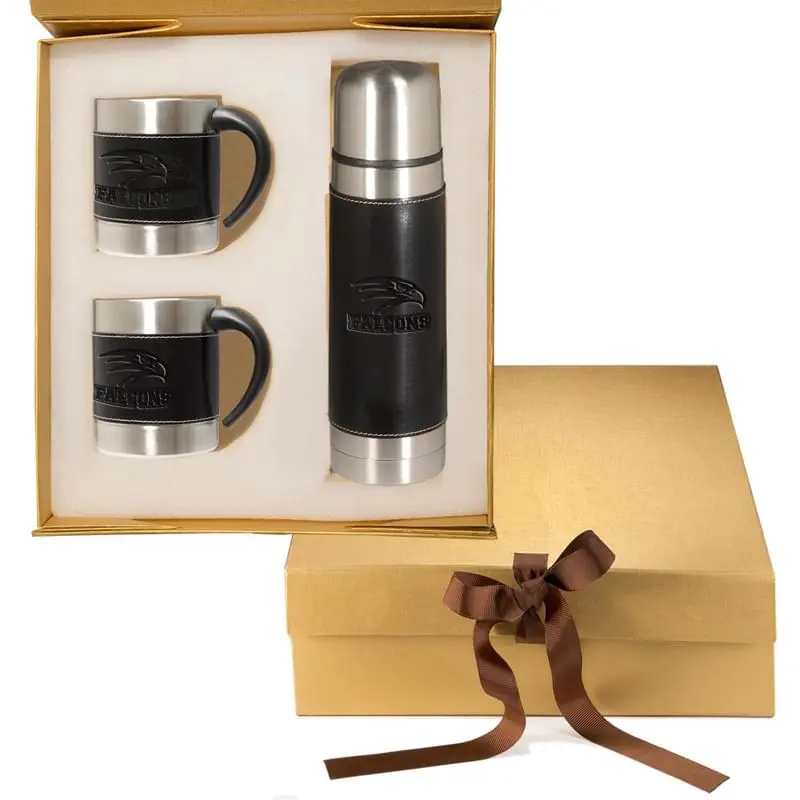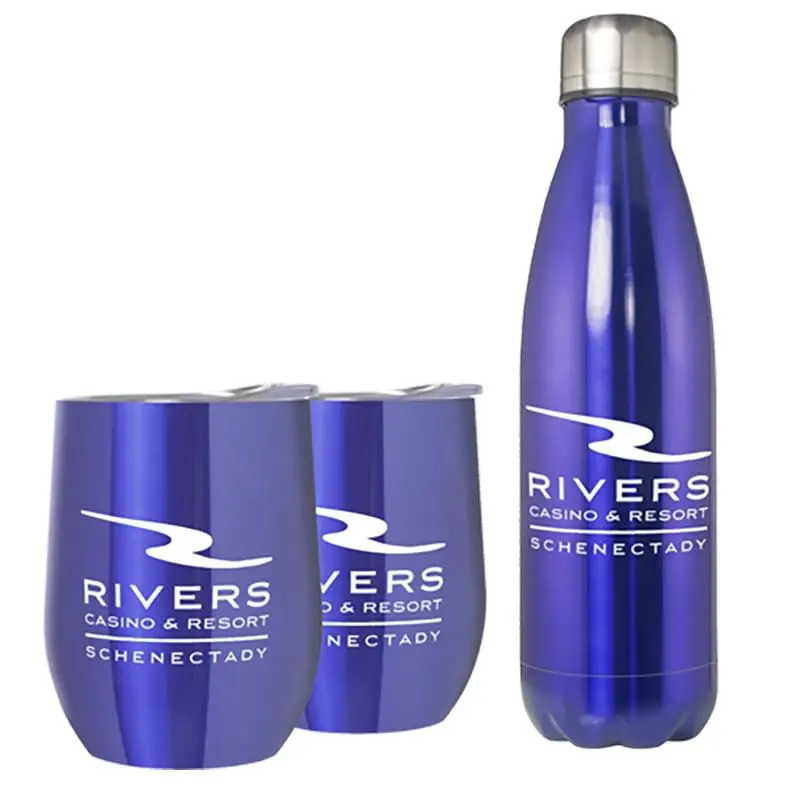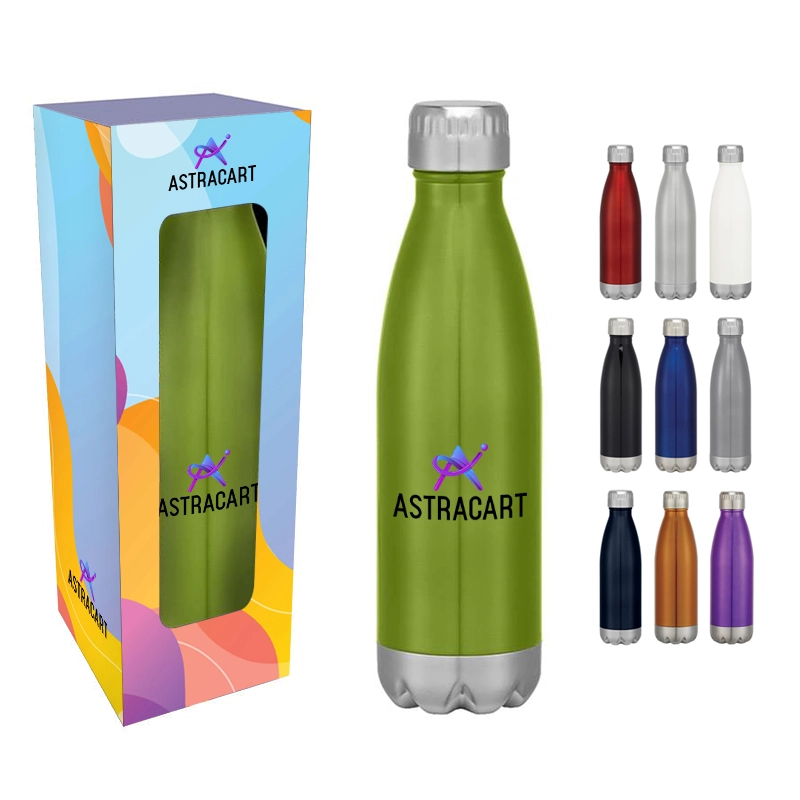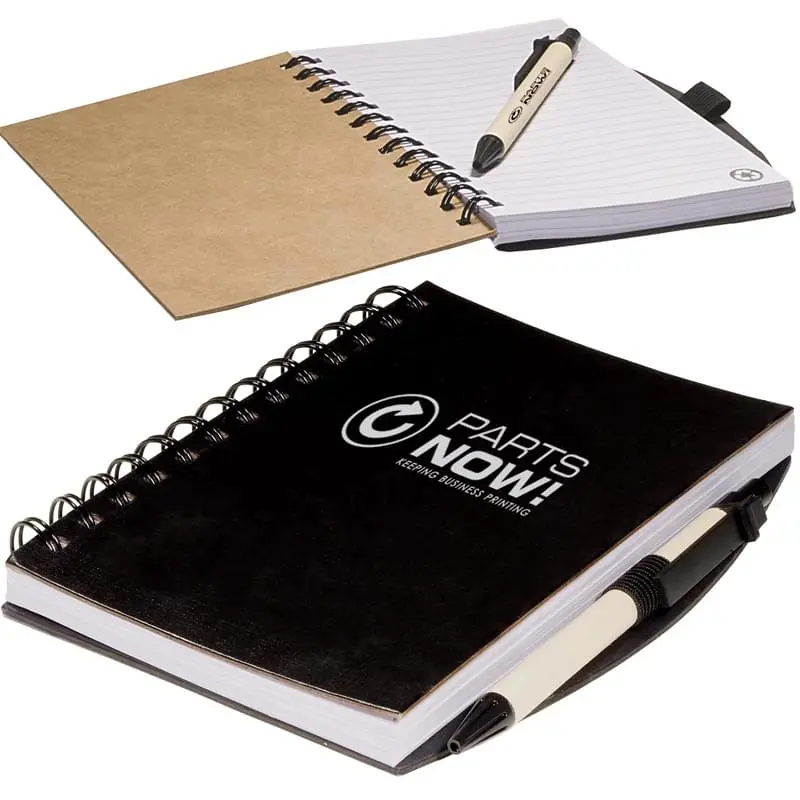7/3/2025
Employee onboarding represents one of the most critical investments in workforce development, yet only 12% of employees receive exceptional onboarding experiences. The stakes are remarkably high: companies with strong onboarding programs achieve 82% improvement in new hire retention and see 2.5 times more revenue growth than organizations with poor onboarding practices. Welcome gifts and promotional products, when strategically implemented, serve as powerful catalysts that can transform the onboarding journey from administrative necessity into relationship-building opportunity.
The promotional products industry has reached $26.6 billion in annual sales, demonstrating the significant investment organizations make in branded merchandise and corporate gifts. For HR professionals and business leaders, the question isn't whether to include gifts in onboarding programs, but rather how to select, budget, and implement promotional products that deliver measurable returns on investment while creating genuine value for new employees.
The business case behind effective onboarding investments
The financial implications of onboarding effectiveness extend far beyond initial program costs. Research reveals that 20% of employee turnover occurs within the first 45 days, with replacement costs ranging from 21% to 200% of annual salary depending on role complexity. Companies investing in comprehensive onboarding experiences report 60-70% increases in new hire productivity and 50% faster time-to-proficiency compared to organizations with minimal onboarding processes.
Welcome gifts contribute meaningfully to these outcomes by addressing fundamental psychological needs during the vulnerable early employment period. BambooHR's research involving 1,565 employees found that 70% of new hires decide job fit within the first month, with 29% making this critical decision within the first week. Thoughtful promotional products create positive first impressions that compound over time, with 89% of employees reporting high engagement when onboarding includes meaningful welcome experiences.
The neurological basis for gift-giving effectiveness lies in dopamine activation within the brain's reward centers. When employees receive recognition or gifts, positive emotions associated with happiness and accomplishment are triggered, creating lasting associations between the employer and positive feelings. This biological response explains why 92% of employees are more likely to repeat behaviors they were recognized for.
Top-performing promotional product categories for employee onboarding
Drinkware dominates with practical daily value
Drinkware represents the second-largest promotional product category with $2.8 billion in annual sales and 10.7% market share. Insulated tumblers, water bottles, and branded mugs generate an estimated 1,000+ impressions per product through daily use, making them exceptional value propositions for onboarding gifts. Popular brands like Stanley, Owala, and YETI have elevated expectations for quality drinkware, with recipients increasingly expecting premium functionality alongside brand messaging.
The psychological appeal of drinkware extends beyond utility to wellness signaling. Organizations providing quality hydration tools communicate commitment to employee health and sustainability values. 30% of consumers are more likely to do business with advertisers after receiving promotional drinkware, demonstrating clear brand loyalty benefits.
Technology accessories deliver perceived premium value
Tech accessories consistently rank among the most valued promotional products, generating approximately 700 impressions per item through regular use. Wireless charging pads, power banks, Bluetooth speakers, and custom phone accessories align with modern workplace expectations while providing genuine utility. The perceived value of technology items often exceeds their actual cost, creating favorable cost-to-impact ratios for onboarding budgets.
Blue light blocking glasses have emerged as particularly relevant onboarding gifts given remote work prevalence and screen time concerns. These accessories address genuine employee wellness needs while reinforcing employer care for worker health and productivity.
Apparel creates team unity and belonging
The $4.5+ billion apparel category remains the largest segment in promotional products, with t-shirts, hoodies, and polo shirts serving as visible symbols of organizational membership. 24.3% of employees report feeling more included when receiving promotional products, with apparel creating particularly strong belonging signals.
Current trends favor sustainable materials, gender-neutral designs, and heavyweight fabrics in oversized fits. Organizations should prioritize quality over quantity, as 41% of consumers report improved brand perception when receiving premium promotional apparel compared to basic alternatives.
Wellness products address post-pandemic priorities
Stress relief and wellness promotional products have gained significant importance following widespread workplace mental health awareness. Aromatherapy products, fitness accessories, massage tools, and meditation aids directly address employee wellbeing while demonstrating organizational values alignment. Given that 75% of adults experience moderate to high stress levels, wellness-focused promotional products signal genuine employer concern for holistic employee support.
Strategic budget allocation across company sizes
Startup considerations: $20-50 per employee
Emerging organizations with limited resources should allocate $20-50 per employee for onboarding gifts, focusing on cost-effective items with high utility. Custom stickers, branded pens, stress balls with aromatherapy, and phone grips provide brand exposure and practical value while maintaining budget discipline. Bulk purchasing can reduce costs by 20-40% for organizations planning multiple hires.
Essential startup onboarding kit components include:
- Quality branded pen and notebook ($8-12 combined)
- Custom phone grip or PopSocket ($3-5)
- Stress ball or desk accessory ($5-8)
- Branded stickers for laptop decoration ($2-4)
Small-medium business approach: $50-100 per employee
Organizations with 100-999 employees typically allocate $50-100 per employee for onboarding gifts, enabling moderate personalization and higher-quality items. This budget range supports premium drinkware, quality apparel, basic tech accessories, and customized packaging that creates unboxing experiences.
Recommended SMB onboarding combinations:
- Insulated tumbler with company logo ($15-25)
- Branded hoodie or quarter-zip ($20-35)
- Wireless charging pad ($20-30)
- Personalized notebook with quality pen ($10-15)
- Custom packaging and welcome note ($5-10)
Enterprise strategies: $75-150+ per employee
Large organizations with 1000+ employees invest $75-150+ per employee in onboarding gifts, supporting premium products, extensive personalization, and role-specific customization. Enterprise budgets enable smart technology integration, luxury branded items, and comprehensive welcome experiences that reinforce organizational prestige.
Premium enterprise onboarding packages might include:
- High-end Bluetooth headphones ($40-60)
- Premium branded backpack or laptop bag ($30-50)
- Smart home assistant or fitness tracker ($50-80)
- Artisanal food or beverage selection ($15-25)
- Professional welcome presentation materials ($10-15)
Remote versus in-office onboarding gift strategies
Remote worker considerations require thoughtful logistics
54% of companies have adopted virtual onboarding processes, creating unique challenges and opportunities for promotional product deployment. Remote employees miss traditional office perks and social connections, making pre-arrival shipping of welcome packages particularly impactful for relationship building and company culture transmission.
Effective remote onboarding gift strategies include:
- Home office optimization: Ergonomic accessories, quality lighting, plants for workspace enhancement
- Technology integration: Premium headphones, laptop stands, wireless chargers for improved productivity
- Comfort items: Branded blankets, premium coffee or tea selections, aromatherapy products
- Company culture artifacts: Items that reinforce organizational identity and values in home environments
Remote employees with effective onboarding are 54% more productive in their first six months, with thoughtful gift packages contributing significantly to early engagement and cultural connection.
In-office advantages enable immediate presentation
In-person onboarding provides opportunities for immediate gift presentation and social witness effects where other employees observe welcoming gestures, reinforcing organizational culture. Desk accessories, office supplies, and workspace personalization items have immediate utility and serve as ongoing brand reminders throughout the workday.
In-office gift strategies benefit from:
- Personal presentation by managers or team members
- Immediate workspace integration and utility
- Social connection facilitation through conversation starters
- Real-time feedback and relationship building opportunities
Sustainability trends reshaping promotional product selection
80% of consumers are willing to pay more for sustainably produced goods, with an average premium tolerance of 9.7% according to PwC research. Generation Z leads this trend with 73% willing to pay more for sustainable products, making eco-friendly promotional items increasingly important for attracting and retaining younger talent.
Sustainable promotional product options include:
- Recycled materials: Water bottles made from ocean plastic, notebooks from recycled paper
- Bamboo alternatives: Phone stands, desk accessories, writing instruments
- Biodegradable options: Seed paper products, compostable packaging materials
- Solar-powered technology: Charging devices, Bluetooth speakers with renewable energy
Products with Environmental, Social, and Governance (ESG) claims experienced 28% more growth over five years compared to traditional alternatives, indicating strong market momentum toward sustainable promotional products.
Technology integration and personalization opportunities
41% of consumers seek unique, personalized items, with technology enabling unprecedented customization capabilities. QR codes linking physical products to digital experiences, NFC technology for contactless information sharing, and app-connected promotional items create interactive brand engagement opportunities.
Advanced personalization technologies include:
- Laser engraving for premium metal item finishes
- Variable data printing for personalized messages beyond simple names
- Augmented reality experiences for interactive product demonstrations
- AI-driven recommendations for personalized product selections based on recipient preferences
Personalized promotional products show 32-34% higher repeat purchase rates and 89% higher long-term retention, justifying investment in customization technologies.
Common implementation mistakes and how to avoid them
Lack of structure leads to inconsistent experiences: 35% of companies lack standardized onboarding processes, creating inconsistent gift-giving that can generate perceptions of favoritism or unfairness. Organizations should develop written onboarding gift policies with clear timelines, spending limits, and selection criteria to ensure equitable treatment across all new hires.
Generic approaches reduce emotional impact: One-size-fits-all promotional product selection without considering individual preferences, roles, or work arrangements significantly reduces emotional connection and perceived value. Role-specific gift customization and demographic consideration improve recipient satisfaction and program effectiveness.
Poor timing diminishes impact: Gifts arriving late or during overwhelming onboarding periods create additional stress rather than positive impressions. Pre-boarding delivery of welcome packages builds anticipation and demonstrates organizational preparedness, while milestone-based gift presentation reinforces achievement recognition throughout the onboarding journey.
Legal compliance and tax considerations
IRS regulations establish clear boundaries
The Internal Revenue Service limits business gift deductions to $25 per person per tax year, unchanged since 1962. However, incidental costs including engraving, packaging, and shipping don't count toward this limit, enabling organizations to enhance presentation value without affecting deductibility.
Promotional items under $4 with company names are fully deductible, making branded pens, stickers, and small accessories particularly cost-effective. De minimis benefits under $100 are generally non-taxable to employees, providing flexibility for meaningful gifts without creating tax complications.
Anti-bribery compliance requires attention
Foreign Corrupt Practices Act (FCPA) compliance becomes relevant for international operations, with no minimum threshold for violations if corrupt intent exists. Organizations should establish clear corporate gift policies with spending limits, approval processes, and documentation requirements to maintain legal compliance.
Dont forgot to also ready our other blog post related to this topic "A Guide to Tax Implications and Benefits"
Measuring success and optimizing programs
Effective onboarding gift programs require systematic measurement and continuous improvement. Key performance indicators include:
- 90-day retention rates compared to historical averages
- Employee Net Promoter Scores (eNPS) measuring likelihood to recommend the company
- Time-to-productivity metrics tracking milestone achievement timelines
- Social media amplification with 45% of millennials sharing corporate gifts on social platforms
Companies with strong recognition cultures experience 31% lower voluntary turnover, demonstrating the long-term value of thoughtful promotional product programs integrated into comprehensive onboarding experiences.
Final Words: Implementation roadmap for immediate action
Step 1: Assess Needs and Define Goals
Organizations ready to enhance their onboarding gift programs should begin with comprehensive needs assessment including employee demographic analysis, budget planning, and vendor evaluation. Pilot programs testing different promotional product categories with small groups enable data-driven optimization before full-scale implementation.
Step 2: Select the Right Vendors and Products
Vendor selection criteria should prioritize financial stability, quality control processes, customization capabilities, and supply chain transparency. Quality assurance frameworks including pre-production samples, manufacturing inspections, and post-production verification protect brand reputation while ensuring recipient satisfaction.
Step 3: Pilot, Measure, and Scale Strategically
The promotional products industry's evolution toward sustainability, technology integration, and personalization creates unprecedented opportunities for organizations to create meaningful onboarding experiences that drive employee engagement, retention, and productivity. Success requires strategic thinking, careful implementation, and continuous optimization based on measurable outcomes and employee feedback.
Companies investing in comprehensive onboarding experiences including thoughtful promotional products consistently outperform peers in talent retention and business outcomes, making these programs essential investments rather than optional expenditures for forward-thinking organizations.
Olivia Smith
Lead Content Strategist
Olivia Smith is a marketing and design expert who specializes in transforming spaces to maximize impact and functionality. With a deep understanding of promotional product trends, Olivia helps brands create stylish, space-efficient environments that attract and engage.




